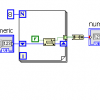High Frequency, Browser-Based Monitoring for cRIO-9068
-
Similar Content
-
- 0 comments
- 10,969 views
-
- 3 replies
- 5,673 views
-
New Release of LabSocket (The Easy Way to Extend LabVIEW to the Web)
By Mechatroner,
- remote control
- automatic web page
- (and 1 more)
- 10 replies
- 14,001 views
-
Remote panels - a free HTML5 alternative that works in mobiles & browsers
By colinrebello,
- remote panels
- html5
- (and 2 more)
- 0 replies
- 4,686 views
-
- 4 replies
- 10,622 views
-





Recommended Posts
Join the conversation
You can post now and register later. If you have an account, sign in now to post with your account.